| Epinephelus maculatus (Bloch 1790), the
Spotted Grouper. Indo-Pacific; Cocos-Keeling through Micronesia. To
60 cm. A juvenile in Fiji and a larger one in N. Sulawesi. Eat reef
fishes, crustaceans and octopi in the wild. |
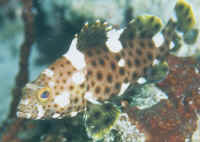 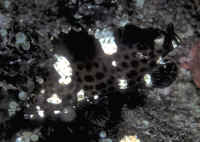
|
Bigger PIX:
The images in this table are
linked to large (desktop size) copies. Click on "framed"
images to go to the larger size. |
%20MD.JPG)
%20MD.JPG) %20MD.jpg) |
| Epinephelus malabaricus (Bloch &
Schneider 1801), the Malabar Grouper. Indo-Pacific, including the
Red Sea. To seven feet long. Another unfortunate "accidental
offering" from time to time. Happy ones in the Red Sea. |
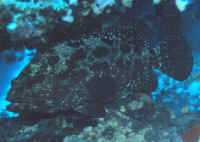 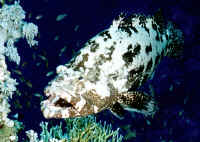
|
Bigger PIX:
The images in this table are
linked to large (desktop size) copies. Click on "framed"
images to go to the larger size. |
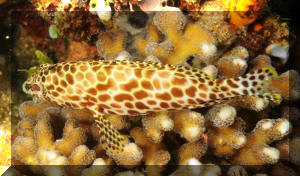 MD.JPG) |
| Epinephelus mustacynis (Poey 1852), the
Misty Grouper, |
|
| Epinephelus niphobles Gilbert & Starks
1897, the Starstudded Grouper. Sea of Cortez to Panama. |
|
| Epinephelus ongus (Bloch 1790), the
White-Streaked Grouper. Indo-west Pacific. To about a foot long.
One of the more common small basses regularly offered in the
aquarium interest. Fast learner in getting along, feeding in
captivity. Aquarium photo. |
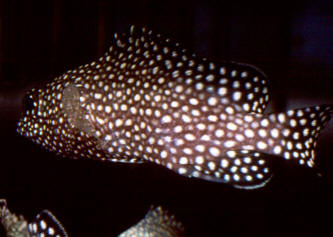
|
| Epinephelus panamaensiss (Steindachner
1876), the Panama Graysby. Sea of Cortez to Columbia. Common in its
range. To 75 cm. Costa Rica (Pacific side) 2011
|
%20MD.JPG)
|
| Epinephelus polyphekadion (Bleeker 1849),
the Camouflage Grouper. Indo-Pacific, including the Red Sea. A
beauty, but grows to about three feet in length. Mostly feeds on
crabs and fishes in the wild. This foot and a half specimen in the
Red Sea. Formerly known as E. microdon. |
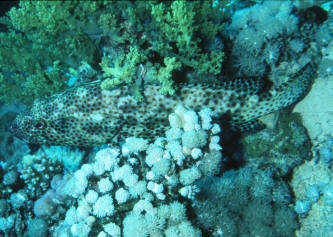
|
To:
part I, part II,
part IV
|
|

